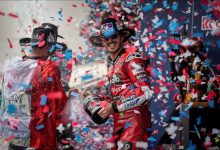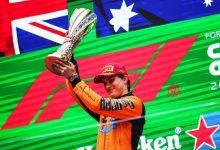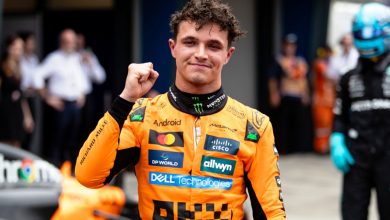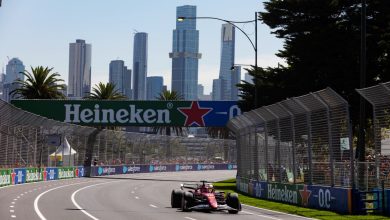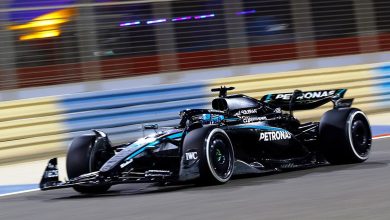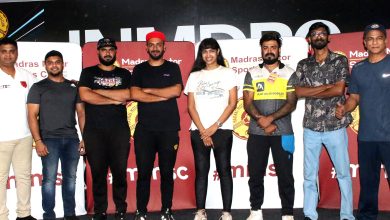The actual influence of Pit-wall communication on the Driver is debatable: Vijay Mallya
TEAM REPRESENTATIVES – Franz TOST (Toro Rosso), Vijay MALLYA (Force India), Manfredi RAVETTO (Caterham), Monisha KALTENBORN (Sauber), Eric BOULLIER (McLaren), Claire WILLIAMS (Williams)
PRESS CONFERENCE
If I could I begin with a question to all of you? Obviously there have been changes today to the team radio ban. The FIA met with the media earlier today but I wonder if we could get a perspective from the teams: why the changes were needed and what it was like today to manage the relationship between the pits and the drivers? Monisha, maybe you would start?
Monisha KALTENBORN: The change comes from complaints that were raised by the fans that the drivers receive too many instructions and are just, in a way, carrying out whatever instructions they have been given. That’s something we as teams of course understand and that that’s not exciting for the event and for the show. So I think it was the right decision to say that we should try to stop these type of instructions and that the drivers do more on their own. As a team, we were a bit surprised to see what extremes the first clarification went to, because we felt that it went into areas that could have raised other concerns as well. So we’re quite happy that the FIA has now taken this position to really just cover areas that were meant to be covered, performance of the driver and not, as such, the entire car.
Franz, can I ask you, because obviously you’ve got a 20-year-old in your car and next year you’ve got a 17-year-old. So to what extent is it a disadvantage not being able to quote-unquote ‘coach them’?
Franz TOST: The changes are absolutely not necessary and I still don’t understand why because all these information are also entertainment for the people in front of TV, to hear a little about the communication between the team and the driver. And for us, of course the more inexperienced a driver is the more information you have to give him and it requires a lot of work during the week to work out the programme and we still have the possibility within the regulations to communicate in a proper. For me it’s absolutely nonsense what we are discussing here, because in all the other kinds of sport a coach gives some information, instructions to a footballer player on the sidelines or whatever. This does not mean that the sportsman is not able to do his job. He can do his job, he does do his job, but maybe he can do it in a better way. It’s just a performance improvement, therefore I don’t understand it.
Manfredi, what’s your view on this? You too have got a rookie in your car. Do you share Franz’s view?
Manfredi RAVETTO: First of all, I have to say, it’s remembers us a little bit of the good old days. I think so many nice pages of motor sport history have been written without pit to car communication. Having said this, we take it easy. It’s a decision from FIA and we have to accept and respect it.
Vijay, you’re active in many sports, you car a lot about the show. What do you think about this?
Vijay MALLYA: You know, the FIA rule has always existed: that the driver should drive unaided. But despite that rule being in existence, teams have taken pit wall to car communication to a certain level and now we have been asked to pull back. It’s as if we have been abusing the regulation in one form or another. This is not Playstation. Whatever you may say from the pit wall, the amount of influence it actually has on the driver and the excitement of the race and the race result is something that is highly debatable. But then, the FIA makes the rules and it’s the obligation of every team to abide the rules. So I guess we will abide by the rules that were fortunately clarified to a more practical extent this morning.
Claire, you’ve got one of the more experienced drivers in the field, how has it been for you?
Claire WILLIAMS: I think it’s been OK. I think it’s an adjustment for everybody, but as Vijay said, they are the new regulations, they have been put forward in an effort to make the show more exciting. But I’m pleased that the new directive that came out this morning has adjusted what is and what isn’t allowed to be said and it has clarified that. From our perspective, as long as we are able to communicate messages around safety and reliability to our drivers, that’s the most important thing. But we’re racers at heart and we want our drivers to be going out there and driving the cars.
And Eric, your feelings? You’ve obviously always been very involved in this side of things, do you have any concerns about what is and what isn’t allowed?
Eric BOULLIER: Yeah, obviously we had some different messages internally during both free practices, like ‘shall we say this’ or ‘shall we not say that’. So we had to police a little bit, or monitor what we wanted to say. In the end I think most has been said by my colleagues. The only thing which was worrying a little bit is to change the regulations during the course of the season, which is never a nice thing to do, even if we obviously listen to the fans and obviously respect the decision of the FIA. Happy as well that they clarified a little bit what can be said and not. And obviously happy that we can still say or deliver some message about safety or reliability of the cars.
Coming back to you Monisha. Can you give us an insight at the heart of the team at the moment? Do you need to shake the tree to break this cycle that you have got into this season? And also, can you tell us what the latest is about Sergey Sirotkin and whether he’ll run in free practice one?
MK: Well, we’re probably having the worst season we have had in the history of the team so far. We know the reasons for it. We’ve been trying to make changes, which not easy when you have certain limitations that you have work within. We’re step by step coming out of it. The steps in my view could be bigger sometimes, that they are a bit more measurable. But the direction is right. So, we have to be patient, focus on the right things and hopefully get out of it. Coming to Sergey, we have announced that he will be driving FP1 in Sochi. That’s one of the milestones we have agreed with him and then we’ll see where we go from there.
Thanks for that. Vijay, coming back to you, you’re neck-and-neck with McLaren for fifth in the Constructors’ Championship. How do you deploy the resources then from here for the rest of the season. Do you want to develop hard this year and try to beat or have you also got one eye also on 2015?
VM: As you rightly said, McLaren is just one point ahead – literally as well, as we sit. Having said that, it is my intention to reverse that. We will do everything possible to achieve that by the end of the season. I’m sure they are developing their car and so are we. Unlike previous years I think all developments done this year will, in fact, carry over to next year’s car. So whatever investment is made I think it’s not lost on 2014 alone. But we enjoy tough racing – I’m sure McLaren do too – and we’ll have some fun and let’s see in Abu Dhabi who’s ahead of whom.
Coming to you Manfredi. Changes again in the management structure at Caterham, the third different team boss in the course of the season. Can you tell us a bit about Christijan’s departure, the structure as it is now and your plans for the development of the team?
MR: First of all, I must say thank you to Christijan Albers, because he supported us, coming on board in a very crucial stage. His decision is a very private and personal one, but it is kind of a natural cut-off with the end of the European season, because he wanted to stay closer to his family and the flyaways are not the best option in this case. Having said that, there is a new structure in place. The main goal is to stabilise the company, on the financial side as well as on the technical side. We are very much focused on getting the best out of the current 2014 car but we are also working very hard on 2015. We are enjoying an excellent co-operation with Toyota and its wind tunnel in Cologne, where our next year’s car is already testing. Unfortunately we inherited… when I say we, I refer to new ownership and new management… a quite difficult situation. The situation was difficult to such an extent that previous ownership decided to pull the plug and therefore whatever we do we see it as an achievement.
Franz, last time you were with us in one of these Friday press conferences you were on a good roll of top-10 qualifying and race results. It seems to have thinned out a bit. I think you’ve had two top-10 finishes in the last four races. What’s been going on to cause that, and also can you give us an update on Max Verstappen’s development?
FT: I think here this weekend I expect a good performance and I expect that both cars are in qualifying three and I expect that we score points. Max Verstappen did, last week, a test in Adria. He finished by doing 396km without any problem. People were really impressed with his performance and now it’s in the hands of the FIA whether he gets a Superlicence to do the Friday P1 session in Suzuka and then we will see. We will prepare him step by step and I am convinced that he is the correct driver for us for 2015.
Do you know when you will get answer on the Superlicence?
FT: It must be soon as the next race is already in Suzuka.
Q: Claire, obviously now third in the Constructors’ Championship after that result in Monza, can you catch Red Bull, do you think, for second? And can you tell us what this renaissance for Williams has meant for the spirit inside the team?
CW: It would be lovely to catch Red Bull but as I was told by my team when I last said ‘we’re after Red Bull’ I got into a lot of trouble. I think now the position for us is very much to consolidate where we are in the Championship – which is obviously in P3 – to build hopefully that gap between us and Ferrari, I think. From where we were last year, obviously we finished in P9, it’s a really great turnaround for everybody at Williams. Probably not one, if you’d said to us last year, this is where you’re going to be this time next year, we would have believed you – but a lot of hard work has gone into that turnaround from changing our power unit, bringing in new personnel, bringing in Felipe Massa and obviously some new commercial partners to support us as well. That’s all contributed to a great new atmosphere at Williams. I think if you just come to our motorhome, you get a sense of revival and a refreshed spirit about what we’re doing. We’ve always been here to race. Obviously the past few years have been really challenging for us. It hasn’t necessarily dampened the spirit but there is a real galvanised effort now within the team. Everyone believes that we can win and we can go on to fight for a seventeenth world championship.
Q: Eric, in a little over four months from now by my calculations, you’ll be hitting the track with a McLaren-Honda in pre-season testing. It doesn’t sound like very long when you say it. Where are you in the development programme for that? And is it looking like the current drivers will be the ones driving that car.
EB: There is obviously a lot of work behind the scenes with our new partner for next year. We have not exactly defined when and where we will test first, to be clear about some discussions and rumours. There is a lot of work going through and, to be honest, as per the original schedule, everything is fine so far. Regarding the driver line-up, wait for the decision and the announcement.
QUESTIONS FROM THE FLOOR
Q: (Abhishek Takle – Midday) Bernie Ecclestone has once again raised the possibility of three car teams, perhaps as soon as next year. I wanted to ask you, how real is the danger that we might lose three teams before the start of next season and, specific to Monisha and Manfredi, how confident are you that your teams will be on the grid in Melbourne next year?
MK: Well, as I said, we are having the worst season of our history, of our team, and yet at the same time, we are more than 21 years in Formula One and we do get that question often and every time we say, ‘well we’ll be around’. I’m going to answer the same way, we’ll be around next year as well.
Manfredi, do you share Monisha’s confidence?
MR: All I can say is that we are very relaxed in this respect. I mean, everybody knows the situation in which we found this team, in which state it was and, well, we are just trying to keep it alive to improve and we are working, as I said before, also providing you with some details on the programme for next year. This is what we are targeting. Of course we want to be on the grid in Melbourne next year – that is definitely our goal.
Vijay, I guess you’re in the part of the grid that doesn’t like the idea of three-car teams too much?
VM: No. I’m a firm believer, as I’ve always said, that every effort should be made to make sure all teams, big and small, survive and race. That’s part of the DNA of Formula One. But the regulations and the agreements do provide that, if the grid is less than 20 cars, then participating teams will race a third car. That’s something everybody signed up to as well. I hope it never comes to that. As I said, I think the DNA of Formula One should be preserved. I will repeat once again that I will try to persuade the decision makers – the commercial rights holders – that they should look very seriously at a more fair and equitable revenue-share model so that we don’t have to answer such questions all the time.
Eric, I guess you would be one of the teams that would be looked at to provide a third car. What are you your thoughts on this situation?
EB: Well, it’s a little bit like Vijay said. We obviously all look for what will keep all the teams onboard. That’s the first priority. There are some mechanisms that, effectively, if some teams were not on the grid, we would maybe run three cars to keep the grid at a decent number. But I don’t think we are there yet, as I said before.
Claire, your views.
CW: Yeah, I agree with what everybody has said. I think that to be having this conversation now shows where we are as a sport. We need to be working harder to ensure that we protect the teams that we have on our grid to ensure that competition that I don’t necessarily think having three-car teams brings. I think we want to have a healthy grid of ten teams all fielding two cars. Not four teams fielding three cars. For Williams, that’s not the DNA of our sport.
Franz, what would it mean for you?
FT: I hope that all the teams which are now taking part in the Formula One World Championship will be on the starting grid next year in Melbourne, and then it’s not necessary to discuss a third car.
Q: (Ralf Bach – Sport-Bild) A question to Mr Ravetto. Can you give us some background to your financial situation at the moment, starting maybe from Silverstone to now, and the status quo now?
MR: Yeah. Thanks for asking this question. In reality I believe our team was not set-up to race in Silverstone. This is the truth. Since new ownership came on-board, since new management has been established, I think we managed not only to race in Silverstone but also to arrive to Singapore. I must say it’s not a very easy task. The financial situation is not one of the easiest. I only have to repeat myself when I said even before, we inherited a situation which was more than critical. I do not know what the reasons are for this, maybe you should ask the previous owners.
Q: (Dieter Rencken – Racing Lines) Another topic that’s reared its head this weekend is the possibility of an engine un-freeze for next year. I believe it was discussed this morning in the team bosses’ meeting. None of you produce your own engines. Accordingly you’re either customers or partners. Where do you stand on this issue, particularly where potential cost increases are concerned?
MK: If we look at this year’s season we’re seeing that there’s such a big disparity between the different engines. And Formula One is not just about different engines, engines do play a role there but the gap should not be that big. We do support the idea that development of an engine is allowed within certain given parameters but it not necessarily leads to the fact that we, as customers, should actually bear the costs for that. Because that’s something that is always taken for granted, that the moment we talk about engine development it’s just a logical step next to say ‘it’ll get more expensive’. As a customer we say ‘why should it?’ because actually the supplier is doing it first of all for his own team. Not for us. We are benefitting from it, of course. We are also paying a lot for the engines. Yes, we as a customer, support that – within the parameters. But we should be getting the same spec at the same cost.
Do you share that Vijay?
VM: Well, you know the engines for 2014 are already a lot more expensive than in previous years and if unlimited engine development in-season is allowed, I agree with Monisha, that that the teams, those sat around this table, shouldn’t be burdened with these additional costs. But on principle, maybe I would agree to support maybe one in-season update of the engine in a very controlled and limited way but I think it would not be appropriate to allow unfettered in-season development.
Claire, it’s one of the secrets of your 2014 success. Would you welcome teams being able to upgrade their engines?
CW: No! Because, as you say, we’ve got the Mercedes power unit and fortunately they’ve done a great job this year. I look back over history in Formula One when we have these kinds of conversations and, you have to enter the season with your race car and, if you haven’t done a good enough job, then why change the regulations? Why should teams be allowed to do that? However, if it is part of the conversation, then fine, we’ll be involved in that conversation and we’ll support it – but only based around what Monisha has already said: as a supplied team, we don’t believe those costs should be passed on to us. If the manufacturers want to spend that money developing their engines, then fine – but as a customer team we want to receive the same specification that the manufacturers provide, and at the same cost that we have now. The cost of changing to this year’s spec engine have been considerable. We’re paying about £20 million for our engine in a period when we’re trying to control costs in Formula One. We’re now looking at a period where engine development costs are going to increase significantly – and I’m not sure that’s the conversation this sport should be having.
What about you, Eric, because next year you go back to being a works engine team again, but it will be a first generation Honda hybrid turbo versus second generation Renaults, Ferraris and Mercedes, so where do you stand? Presumably you would like to be able to upgrade.
EB: No, we would like obviously to make sure there is a… I like to use as reference that first comment of Monisha, a regulation which makes the possibility for all engine manufacturers to have a fair, let’s say, trade, to make sure we can be as equal as possible. I think that’s very important for the show, obviously as well, as there was a lot of stories written about the engine since a long time, a lot of complaints as well about the fans, a lot of positive as well because the racing was good and it’s just a normal discussion, let’s say, going forward to make sure there is more equity between the engine powers.
MR: Regarding a lift of engine freeze, I believe that generally speaking everybody deserves a second chance in life so why not applying this to engine manufacturers? Having said this, I have to emphasise that the most important thing for a small team like Caterham is to keep costs under control. I remember times when we were using 60/70 engines per year instead of the number we are using now and the bill was very similar, so there must be something to readdress.
Q: Franz, you remember those times as well? Where do you stand on this?
FT: No, first of all I must say that the parity of the performance of the engines is fundamental to increase the show. It cannot be that two cars are one-to-two seconds ahead of the rest of the field. Fortunately and nevertheless we’ve had some very interesting races but the engine manufacturers should have the possibility – if they want – to come up with modifications but only if the additional costs will not come to the customers, because this is unacceptable, but generally, I think it’s good that Ferrari and Renault can come up with new modifications for next year.
Q: (Kate Walker – crash.net) I’ve got a question for Claire and Eric as members of the F1 Strategy Group. I know you can’t give us too much information about the meetings that you have; however, Charlie’s said that the radio decision was made at the Strategy Group meeting in Monza. What kind of pushback did the teams present give with regard to the rules, and why was it such a surprise that the recently-cancelled radio rules were quite so strict as they were?
CW: I think the conversation came out of a need to improve the show as we talked about earlier but I think our concerns were around the reliability and safety and so Charlie was asked to go away and have a look at that and obviously that’s what’s come out this week and the directive that came out this morning addressed and clarified what we were and weren’t allowed to say. So that was as much of the conversation as I would want to talk about.
EB: Yup, nothing to add. Just a discussion which we obviously had in Monza and as you say, it was raised and just based on the regulation, there was some adjustment that was proposed and just to make sure that in such a short term there was back and forth discussion.
Q: (Ian Parkes – Press Association) Vijay, over the past couple of months, we’ve read a lot about your financial troubles in India, court issues etc. How much is that impacting on you personally, at a personal level? How much is that impacting on your personal running of the team and is there any carry-over financially for the team? And secondly, Roy Sahara has his own personal issues; does he still play an active role with the team or are you now looking for other investors to take over from him?
VM: Sahara Group have problems relating to funds raised from the public which the Securities and Exchange Board of India have determined were not raised as per regulations and need to be refunded. Sahara claims that the investors have been refunded and claims to have provided the necessary proof of refund to the Securities and Exchange Board of India. They don’t seem to be able to verify the facts provided by Sahara, therefore the current situation. As far as my situation is concerned, I’m not a borrower, I have not borrowed any money from any bank and therefore all that you read about may contain my name but has to do with one of our companies which is Kingfisher Airlines but of course, if you continue to refer to me in my personal capacity, it conveys the wrong impression that I’m a debtor in a sense, which I’m not. The agreement between Sahara and myself is that they’re shareholders in the team, they continue to be shareholders in the team. I have asked them if they would like to change the situation and they said no, they want to stay in. I’ve always run and managed the team which is doing better than it ever has in its history and we’re going forward from here.
Q: (Chris Lyons – AP) It seems that the ban on messages about car performance – not driver coaching but car performance – will come in at the start of 2015. Is that your impression or is this something that is going to be argued and debated more between now and then?
EB: I think it’s going to be discussed further. There’s clearly been a pushback on part of the allowance for the messaging which has been postponed for now and the article 20.1 of the sporting regulations is quite clear, even if there is always some room for interpretation, so that’s why there will be some more debate.
Q: (Graham Harris – Motorsport Monday) Monisha, without going into the politics about whether we should or shouldn’t be going to Sochi, obviously Sergei is being backed by Russian money. Are any of the new sanctions that have been put in place by the EU and the US affecting that money coming into you or do you expect it to be affecting you, and any general questions about that?
MK: It’s not affecting it.
Q: (Graham Harris – Motorsport Monday) So it’s not Russian money coming to you.
MK: I never said that. You asked me if it’s affecting it and I said no.
Q: (Graham Harris – Motorsport Monday) And do you expect it to affect you in the future as sanctions get tighter?
MK: If you look at the sanctions which at least apply to Switzerland, it wouldn’t really affect us so we wouldn’t fall within that ambit. What happens in the future we don’t know.
Q: (Stuart Codling – F1 Racing) Manfredi, just to follow up from Ralf’s earlier question, there seems to be a new name on the nosecone of your car this weekend. Could you clarify whether that’s a change of your operating company or whether there’s a new company?
MR: No, no, no, definitely not, this has nothing to do… Basically, it’s not there is a new name. The team has always been identified by the abbreviation of CF1. You write it also in your comments. By the way, the entrant is and stays One Malaysia Racing team and One Malaysia Racing team is a conglomerate of companies which are working on different tasks and it stays like this.
Q: (Dieter Rencken – Racing Lines) Another question to you Manfredi, particularly about the structure of your team. I’d like to give you a second chance of answering this question: your investors, the Swiss-Middle Eastern investors, your team has consistently refused to identify them. In this paddock, one gets suspicious so is there a reason why they are keeping such a low profile?
MR: It’s impolite to answer with a question but who’s the beneficial owner or ownership of an investment fund? Who’s the owner of Blackstone, just to make an example? So the ownership behind our team is a group of investors, it’s a club of investors. They just want to make the best out of their investment and they don’t need to have any kind of personal visibility or publicity. By the way, it’s something they refuse. They are very much business-driven and investment-orientated. I hope it helps.
Q: (Kate Walker – crash.net) Another question for you, Manfredi. If you’re not able to tell us who the investors are, could you please tell us what other items might be in their investment portfolio?
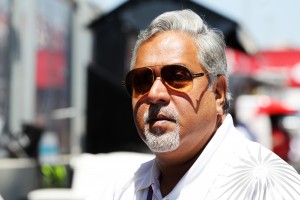
MR: I’m not supposed to know this in detail. It’s a group of wealthy individuals and I’m just trying to make my best in running this team, together with a very nice group of people. That’s my main concern. All the rest, I’m really not supposed to go more in detail.
eom/FIA transcript of the Press Conference
